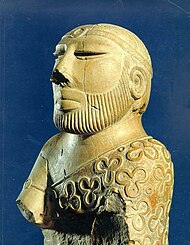
Back এক ইউনিট ব্যবস্থা Bengali/Bangla One-Unit (Pakistan) German एक इकाई व्यवस्था Hindi Satu Kesatuan ID ਇੱਕ ਯੂਨਿਟ ਸਕੀਮ Punjabi ون يونٽ Sindhi One Unit Scheme SIMPLE ஓரலகுக் கொள்கைத் திட்டம் Tamil ون یونٹ Urdu

| History of Bangladesh |
|---|
 |
|
|
| History of Pakistan |
|---|
 |
| Timeline |
The One Unit Scheme (Urdu: ون یونٹ; Bengali: এক ইউনিট ব্যবস্থা) was the reorganisation of the provinces of Pakistan by the central Pakistani government. It was led by Prime Minister Muhammad Ali Bogra on 22 November 1954 and passed on 30 September 1955. The government claimed that the programme would overcome the difficulty of administering the two unequal polities of West and East Pakistan separated from each other by more than a thousand miles.[1] To diminish the differences between the two regions, the 'One Unit' programme merged the four provinces of West Pakistan (West Punjab, Sind, NWFP & Baluchistan) into a single province to parallel the province of East Pakistan (now Bangladesh).
The One Unit program was met with great resistance and grievances were raised by the four provinces since its establishment. As per scholar Julien Levesque, the One Unit project had mainly been pushed by the Punjabi elite of West Pakistan since 1953 with the aim of preventing politicians from East Pakistan from gaining power at the centre.[2] The National Awami Party successfully sponsored a bill in the National Assembly calling for its dissolution and providing for regional autonomy. This led to the military takeover of the national government.[3] The One Unit programme remained in effect until 1970.[1] Finally, President General Yahya Khan imposed Legal Framework Order No. 1970 to end the One Unit program and reinstate the provisional status of the Four Provinces as of August 1947.[1]
- ^ a b c "One Unit". Story of Pakistan. Retrieved 16 May 2013.
- ^ Schaflechner, Jürgen; Oesterheld, Christina; Asif, Ayesha, eds. (2020). Pakistan: alternative imag(in)ings of the nation state (First ed.). Karachi: Oxford University Press. p. 247. ISBN 0190701315.
The One Unit project had mainly been pushed by the Punjabi elite of West Pakistan since 1953 with the aim of preventing politicians from East Pakistan from gaining power at the centre.
- ^ Talbot 1998, p. 86.
© MMXXIII Rich X Search. We shall prevail. All rights reserved. Rich X Search